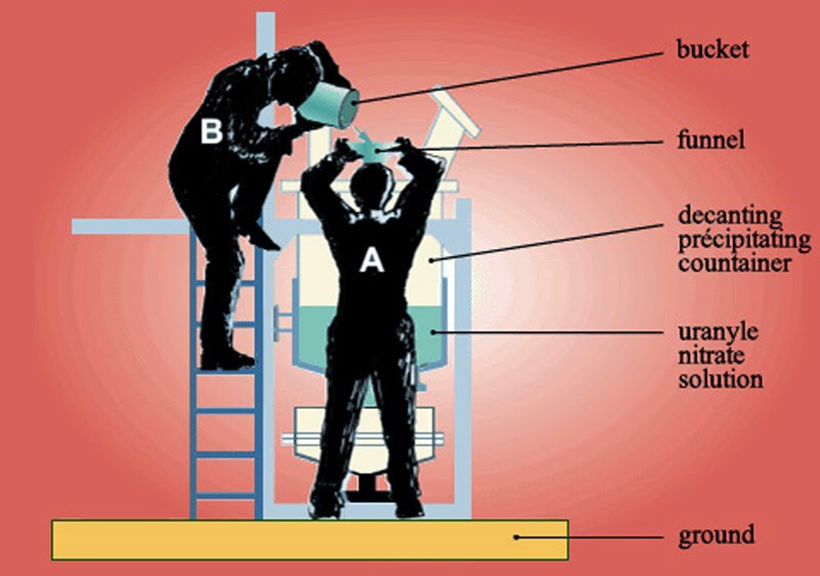Unraveling The Tokaimaura Nuclear Accident: A Tragic Chapter In Japan's Nuclear History
The Tokaimaura nuclear accident stands as one of the most significant nuclear disasters in Japan's history, marking a turning point in the nation's approach to nuclear safety and regulation. On September 30, 1999, a catastrophic event unfolded at the JCO Co., Ltd. fuel processing plant in Tokaimaura, Japan, resulting in severe radiation exposure to workers and surrounding communities. This incident not only exposed the vulnerabilities within Japan's nuclear safety protocols but also raised critical questions about the management and operational procedures of nuclear facilities across the globe.
The Tokaimaura nuclear accident involved a criticality accident, where an uncontrolled nuclear chain reaction occurred due to the improper handling of uranium fuel. This led to the exposure of several workers to life-threatening levels of radiation, with serious consequences for their health and safety. The event garnered international attention and prompted widespread discussions about the risks associated with nuclear energy, ultimately influencing the regulatory landscape governing nuclear power in Japan and beyond.
In the fallout of the Tokaimaura nuclear accident, public trust in nuclear energy waned, leading to protests and calls for stricter regulations. The lessons learned from this disaster have shaped the future of nuclear energy policy, safety measures, and emergency response protocols in Japan and around the world. Understanding the complexities and ramifications of the Tokaimaura incident is essential for anyone interested in the ongoing dialogue surrounding nuclear energy and safety.
What Happened During the Tokaimaura Nuclear Accident?
The Tokaimaura nuclear accident was a result of a series of critical missteps. On the fateful day, workers at the JCO plant were attempting to create a solution of uranium fuel for a nuclear reactor. Due to a lack of proper training and adherence to safety protocols, they mistakenly mixed an excessive amount of uranium in a container. This violation of safety regulations led to a criticality accident, resulting in a nuclear chain reaction that released a significant amount of radiation into the facility.
Who Were the Victims of the Tokaimaura Nuclear Accident?
Three workers were directly affected by the accident, suffering from acute radiation syndrome. Their health deteriorated rapidly as they were exposed to radiation levels estimated to be over 15 times the safe limit. The incident not only impacted these individuals but also the surrounding community, with concerns about long-term health effects for those living nearby.
What Were the Immediate Responses to the Tokaimaura Nuclear Accident?
Following the incident, emergency response teams were dispatched to the site to contain the situation. The affected workers were hospitalized, and extensive decontamination efforts were initiated to mitigate the spread of radiation. The Japanese government also set up an emergency task force to investigate the accident and assess the damage, leading to increased scrutiny of the operational practices at nuclear facilities.
How Did the Tokaimaura Nuclear Accident Change Nuclear Safety Regulations?
The Tokaimaura nuclear accident prompted a comprehensive review of nuclear safety regulations in Japan. In the aftermath, the government implemented stricter safety protocols and training requirements for workers in the nuclear industry. The incident also led to the establishment of the Nuclear and Industrial Safety Agency (NISA), tasked with overseeing nuclear safety and enhancing regulatory measures. These changes aimed to prevent similar incidents from occurring in the future.
What Lessons Were Learned from the Tokaimaura Nuclear Accident?
Several critical lessons emerged from the Tokaimaura nuclear accident, including:
- Importance of proper training and adherence to safety protocols.
- Need for effective communication and transparency within nuclear facilities.
- Significance of regular safety drills and emergency preparedness.
- Critical need for a robust regulatory framework to oversee nuclear operations.
What Impact Did the Tokaimaura Nuclear Accident Have on Public Perception of Nuclear Energy?
The Tokaimaura nuclear accident had a profound impact on public perception of nuclear energy in Japan. Following the incident, many citizens expressed their concerns about the safety of nuclear power plants and the potential risks associated with nuclear energy. Protests emerged, calling for a reevaluation of Japan's reliance on nuclear power, which eventually contributed to changes in energy policy, especially after the Fukushima disaster in 2011.
How Is the Tokaimaura Nuclear Accident Remembered Today?
Today, the Tokaimaura nuclear accident is remembered as a cautionary tale within the nuclear industry. It serves as a reminder of the potential dangers of nuclear energy when safety protocols are not strictly followed. The incident is often referenced in discussions about nuclear safety, regulatory reform, and the need for continuous improvement in the sector. Memorials and educational initiatives have been established to honor the victims and promote awareness of nuclear safety issues.
```
Anant Ambani: The Harvard Connection
Discover The Best Ways To Download Movies Bollywood
Unraveling The Mystery: Anthony Starr Rumors


